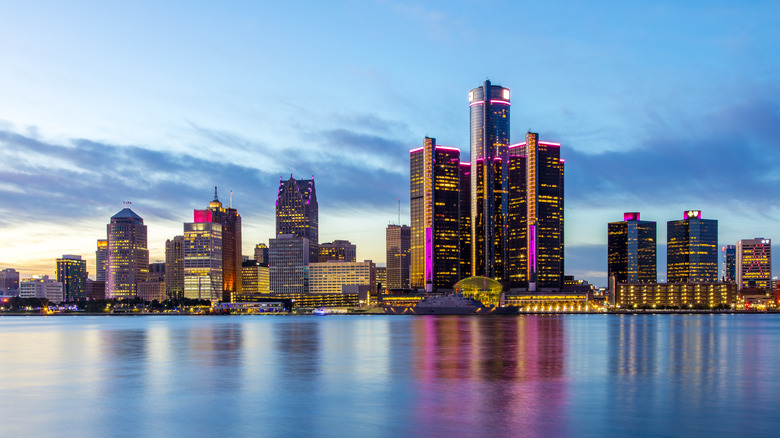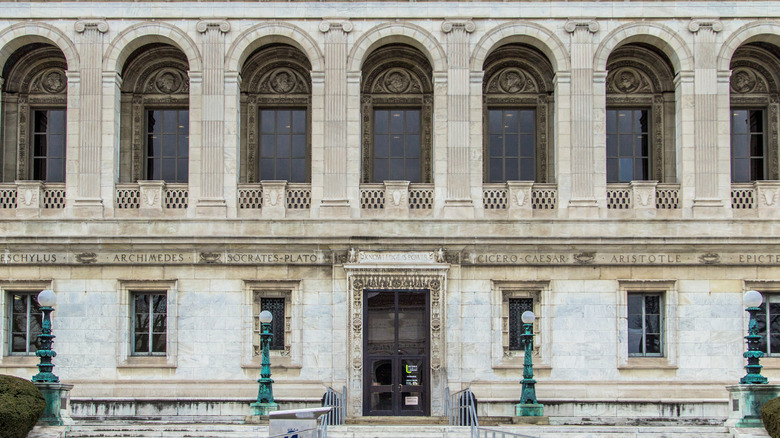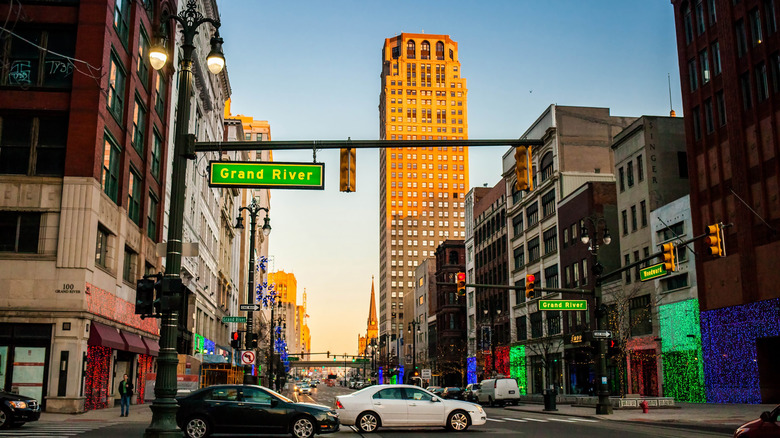This Surprising City Is Known As 'The Paris Of The Midwest' For Its French Heritage And Stunning Architecture
When you think of cities with French roots, your mind will likely think of Canada's Quebec region, where you'll find Parisian vibes with fewer crowds, or New Orleans, with its iconic French Quarter, which is some of the boldest European architecture in the U.S. But hiding in the state of Michigan is a city with less fame but a remarkable French heritage, including stunning Beaux-Arts architecture and a revivalist spirit that makes it one of America's most unexpected gems. Detroit, often called "The Paris of the Midwest," is now experiencing a cultural renaissance, giving it a certain amount of pedigree and making it undoubtedly one of the best places in the world to visit if you love Paris.
Detroit's connection to France runs deep, with the city being founded in 1701 by the French explorer Antoine de la Mothe Cadillac, who was one of many French settlers who had embarked to establish the area as "New France." Today, street names connect Detroit to its European past, with names such as St. Antoine and Larned lining the streets. But it's not just the street names that connect this part of Michigan to its European heritage; so does the grandeur of its architecture, modeled after France's boulevards and monumental public buildings. What's more, the same French-American architect, Pierre Charles L'Enfant, who helped plan Washington D.C., inspired the layout of this city, causing European ripples throughout the structures and cultural institutions of Detroit.
Detroit, part of America's New France
Unbeknownst to many, here you'll find some of the finest, most elaborate architecture in the United States. Monuments such as The Guardian Building, a 1929 Art Deco skyscraper known as the "Cathedral of Finance," towers on the Detroit skyline in bold reds, oranges, and mosaic styles influenced by Native American, Aztec, and Art Deco patterns. This building mirrors the grandeur of European cathedrals but with a modern twist.
Not far from here is The Fisher Building, also known as "Detroit's largest art object," a must-see tower with opulent vaulted ceilings, marble and mosaic interiors with hand-painted patterns and brass fixtures. Visitors can opt for a guided tour to truly appreciate the craftsmanship at work here. Architecture enthusiasts will be fascinated by the city's Masonic Temple, the largest of its kind in the world, which blends Gothic Revival and neoclassical architecture in a magnificent, mysterious structure where mystery, history, and grandeur collide.
You should also make time for the Detroit Public Library and the Detroit Institute of Arts, two buildings built during the same part of the 20th century, with classical Italian Renaissance elements, including marble facades, ornate cornices, and hand-carved friezes. At the DIA, you'll be able to see Diego Rivera's Detroit Industry Murals, considered some of the finest works of 20th-century public art. The city's Book Tower is another historic monument that is worth visiting, a restored Renaissance Revival skyscraper that also houses a restaurant and hotel.
Industrial might and Parisian elegance
For those traveling in from abroad, Detroit is easily accessible from Detroit Metropolitan Wayne County Airport, which operates flights from several international destinations. The travel time from the airport to downtown Detroit is around 20 minutes by car. If you're traveling from the Midwest, Amtrak offers train routes from Chicago and Toledo. For a high-end stay, the Detroit Foundation Hotel offers accommodation in a restored 1929 firehouse and is one of the most elegant places to stay in the city. It also has an in-house restaurant called the Apparatus Room, which is a destination in itself.
The city's French influence doesn't stop with Detroit's buildings but extends to its culinary scene, with numerous restaurants boasting European influences and nodding to the city's multicultural heritage. For a taste of Europe, stop at La Lanterna, an Italian bistro with French undertones that offers wood-fired Neapolitan pizzas and classic wines. The Selden Standard in Midtown is another great place to eat — it offers small plates constructed from locally sourced ingredients. Cannelle offers French-style pastries and is owned by a French-trained chef. Their macaroons, croissants, and eclairs will transport you to Paris within one bite. Le Suprême brasserie in Book Tower serves up oysters, steak and fries, and a trip in time to the golden age of French dining. Detroit's cultural renaissance proves that it's a city of both industrial might and elegance, where French roots and American reinvention merge, giving it the charm of Paris with a distinctly Midwestern soul.


